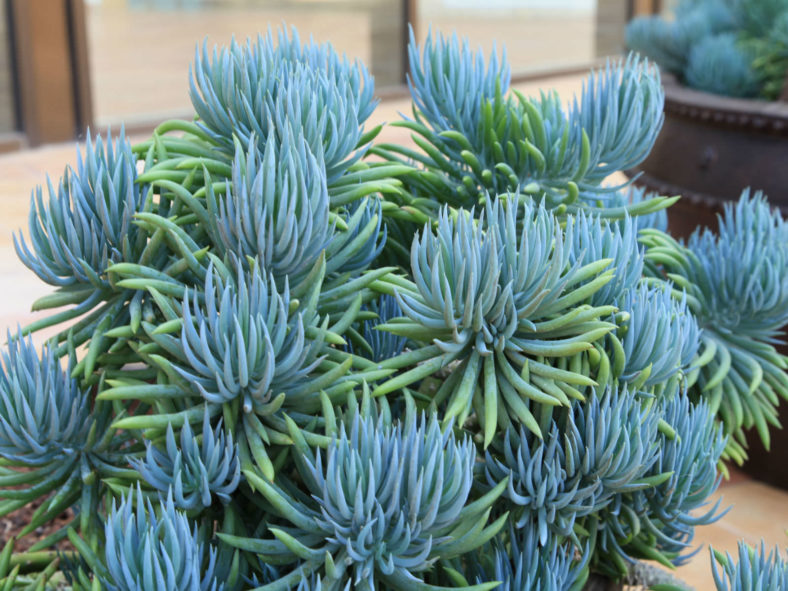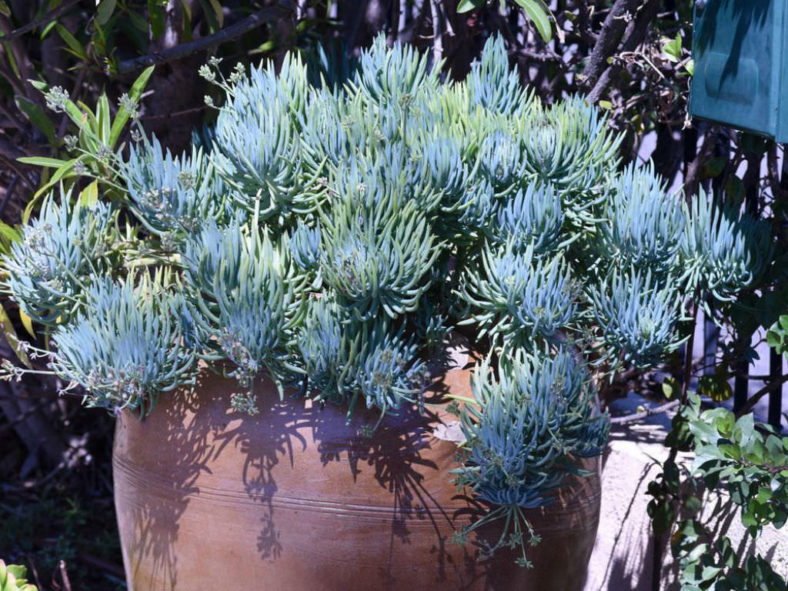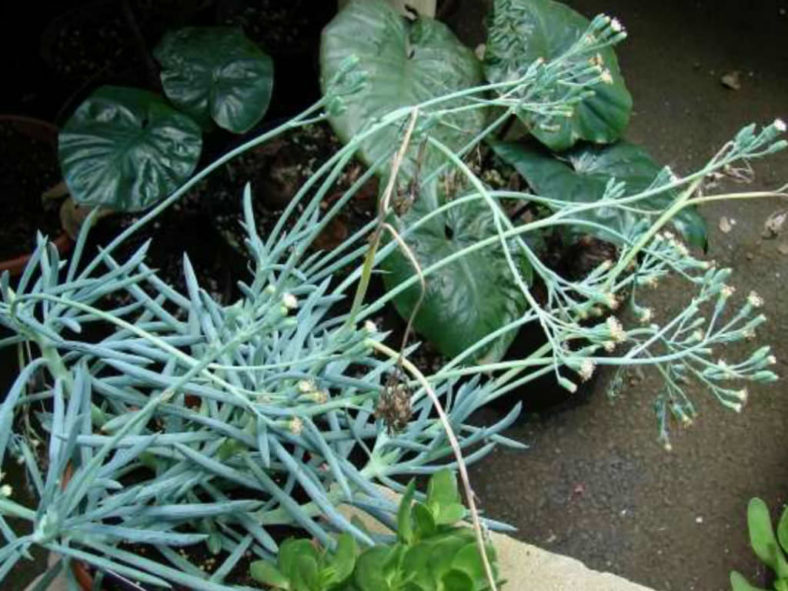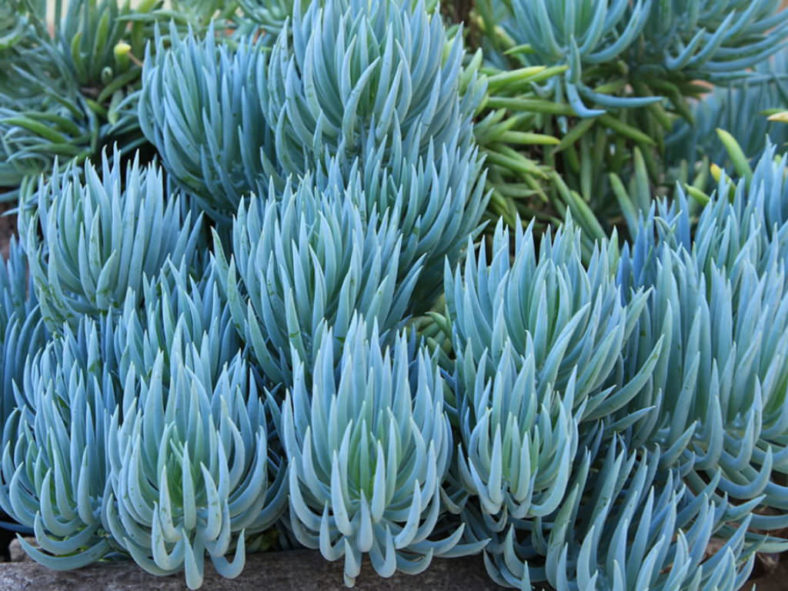Scientific Name
Curio talinoides var. mandraliscae (Tineo) P. V. Heath
Common Name(s)
Blue Chalk Sticks, Blue Finger, Blue Stick Succulent
Synonym(s)
Kleinia mandraliscae, Senecio mandraliscae, Senecio talinoides subsp. mandraliscae
Scientific Classification
Family: Asteraceae
Subfamily: Asteroideae
Tribe: Senecioneae
Subtribe: Senecioninae
Genus: Curio
Etymology
The varietal epithet "mandraliscae (MAN-druh-lee-skee)" honors Enrico Pirajno (1809-1864), Baron of Mandralisca.
Origin
The origin of this variety is quite a mystery. It was first described in 1855 by Vincenzo Tineo based on specimens collected by his disciple Baron Enrico Pirajno (1809-1864) of Mandralisca on the Vulcano island, a small island located at the southernmost end of the seven Aeolian Islands. Twenty-two years later, in 1877, Michele Lojacono Pojero (1853-1919) did not find any wild specimens on the island Volcano but observed some plants growing in pots on the close island Lipari and referred them to a plant of probably hybrid origin.
Description
Curio talinoides var. mandraliscae, formerly known as Senecio talinoides var. mandraliscae or Senecio mandraliscae, is a spreading succulent with pencil-like, blue-gray leaves with a waxy white coating. It grows up to 18 inches (45 cm) tall. Stems are erect initially but become procumbent, often rooting at the nodes and forming dense mats with age. They can grow up to 5 feet (1.5 m) long and 0.4 inches (1 cm) in diameter. The leaves are thick, fleshy, slightly curved, and can reach up to 6 inches (15 cm) in length and 0.5 inches (1.3 cm) in diameter.
The flowers are small, rayless, dull-white, held in corymbs, and appear in summer.

How to Grow and Care for Curio talinoides var. mandraliscae
Light: Keep Curio plants in partial shade if outdoors, which is their preference in summer, and bright sunlight if indoors. They will grow in full shade but will become lank and leggy.
Soil: These plants prefer well-draining soil. For growing Curio indoors, using a container with at least one drainage hole at the bottom is essential.
Hardiness: Curio talinoides var. mandraliscae can withstand temperatures as low as 20 to 50 °F (-6.7 to 10 °C), USDA hardiness zones 9a to 11b.
Watering: Curio plants are drought tolerant, but the soil should never be left dry for too long. They need some water during the growing season, but be careful not to leave the soil wet for prolonged periods.
Fertilizing: The members of this genus can take a bit more fertilizer than other succulents if you want them to grow fast.
Repotting: You do not need to repot Curio plants often. You can do it when the container becomes too small or shallow.
Propagation: These plants can be grown from seeds or cuttings.
Learn more at How to Grow and Care for Curio.
Toxicity of Curio talinoides var. mandraliscae
Curio plants are toxic. Grow them with great care if you have children, pets, or livestock.
Links
- Back to genus Curio
- Succupedia: Browse succulents by Scientific Name, Common Name, Genus, Family, USDA Hardiness Zone, Origin, or cacti by Genus
Photo Gallery
Click on a photo to see a larger version.



